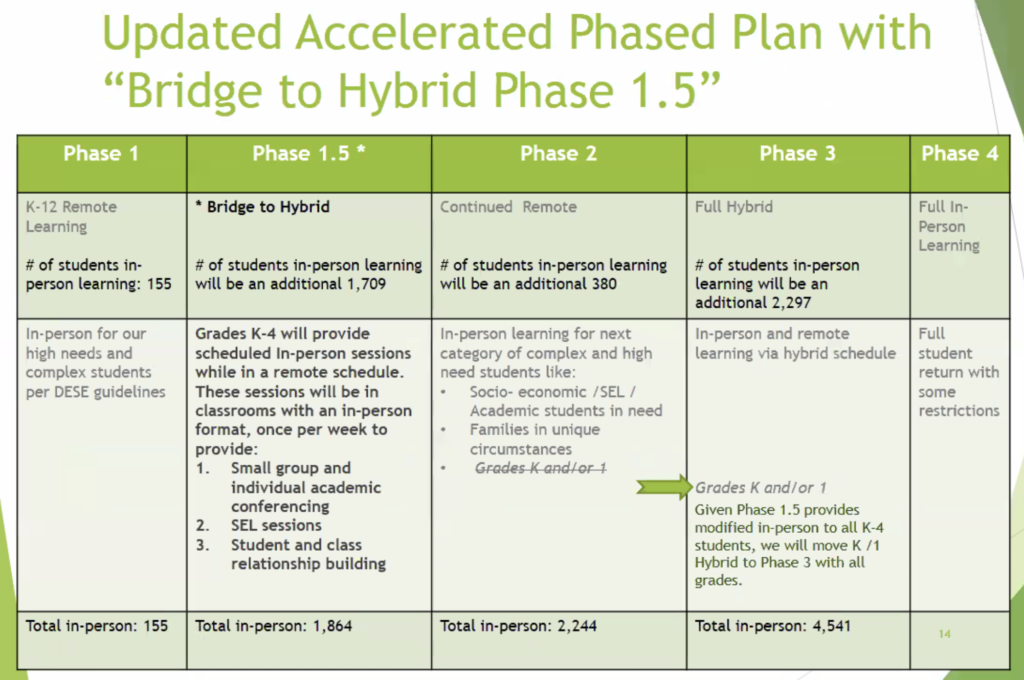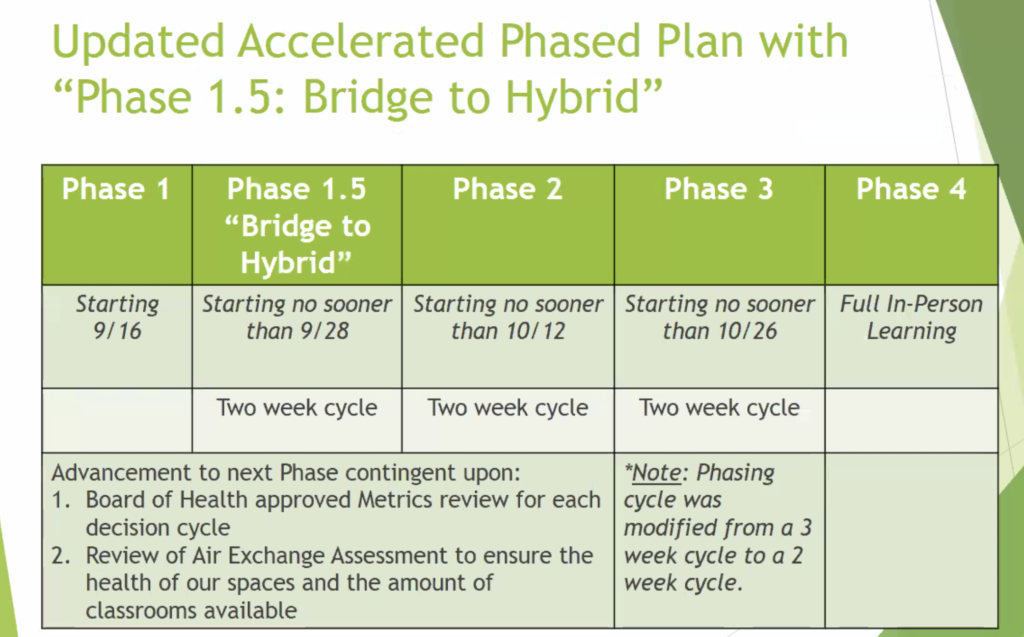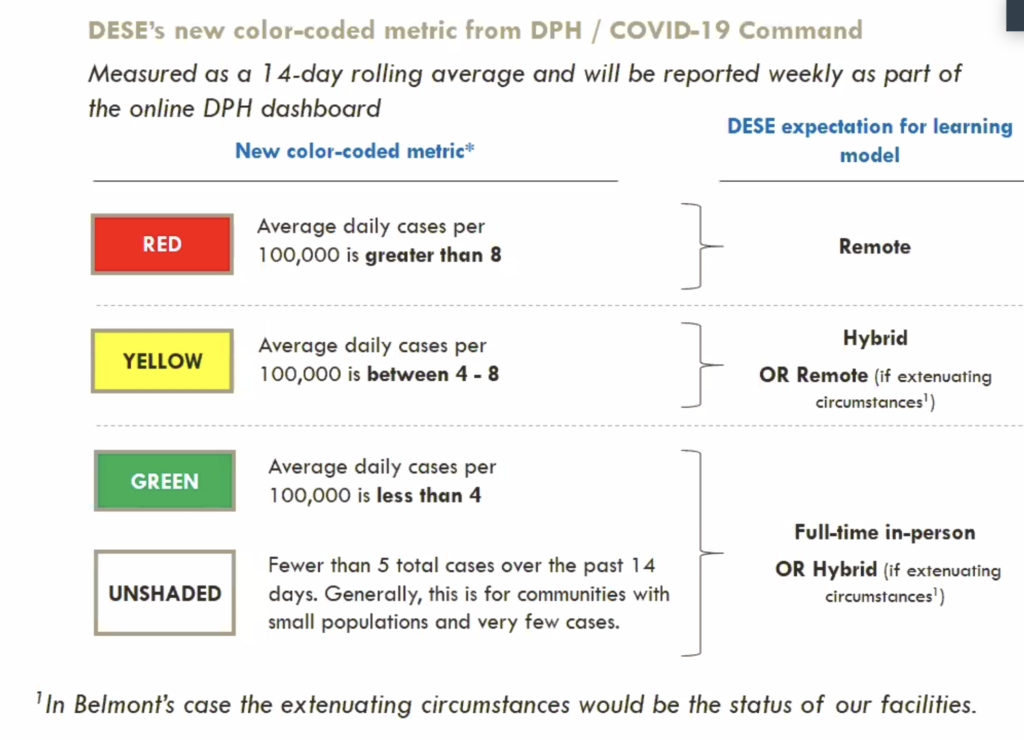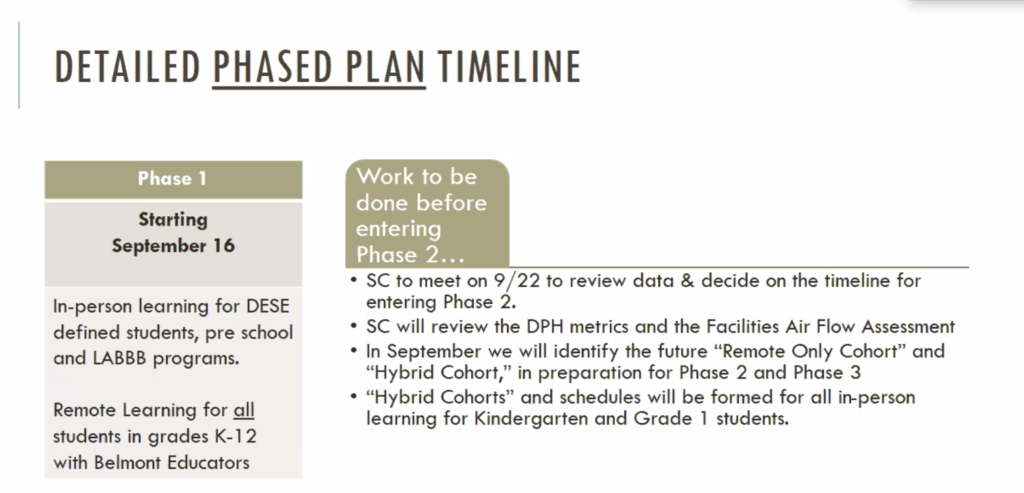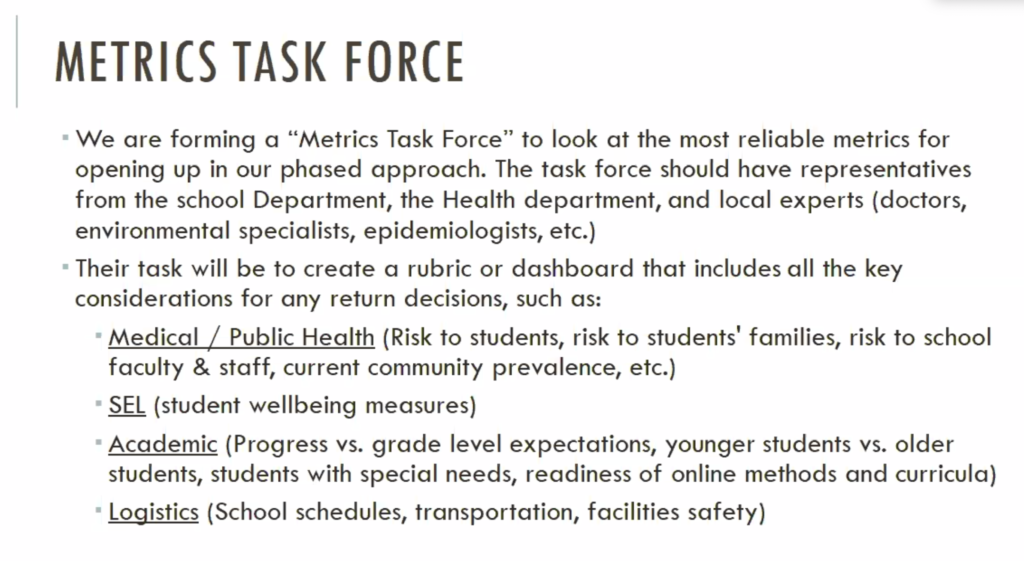Photo: The Youtube video of the parents explaining its proposal
Belmont High School students can and need to return to in-person learning. The hybrid model originally proposed and adopted by the School Committee resulted in an unacceptable loss of instruction time. There is a simple, inexpensive solution that can bring our children back to school now: Extend remote livestream to hybrid livestream in days.
Our proposal (by Sheryl Grace YouTube) is that teachers can livestream classes to all remote students so that both the in-person and remote students are learning together. Technically, this is no different than the Google Classes offered in the remote environment – teachers are using technology to teach their classes and they continue to do so. This approach has significant upside for both the students and teachers. Students are able to attend class in-person – they can see their peers and their teachers. They are in a more traditional school environment. Teachers can more clearly see their classes – what is working and what may need further explanation. And both groups are able to share an energy that cannot be transmitted online. Because the classes are live-streamed, teachers can avoid developing hours of asynchronous learning content. This model does not require months of meetings – it has been implemented by our fellow Middlesex County schools – it is working and it is ready for immediate adoption in Belmont.
In a surprising reversal of the previous school committee vote, the committee voted to delay again the start of hybrid in high school to an unspecified time, at best January. This decision was based on survey results which showed the community’s strong dislike of the proposed hybrid model and were willing to take a delay for a better model. We agree that the original hybrid model removed too much instruction time, but do not agree that we need months to fix it. Instead of looking to surrounding communities – many of which have brought their high school students back to school – the school committee decided to implement a task force with the goal of reopening in January – almost a full year after our schools were shut down.
A number of public schools have implemented a more comprehensive hybrid plan than BPS. The delay of Belmont hybrid affords us the opportunity to “copy&paste” rather than reinventing the wheel. Key to all these hybrid models is live streaming that maximizes in person learning and instructional time, while maximizing teacher safety by allowing those teachers who require it to teach from home. Some of us have implemented live streaming in our classrooms using solutions that are within the abilities of teachers, as well as the financial and technical support available in the district. Reducing instructional time is burdensome to teachers as it requires them to retool their lesson plans and curriculum. As teachers get visual feedback from students attending in-person, they are able to be more effective for the remote students as well. This is a solution where everyone wins.
The fear that drives school closures is understandable, but may also be exaggerated. In the past week, the infection rate among approximately 450,000 students and 75,000 teachers attending classes in person in Massachusetts was 0.029 percent and 0.09 percent respectively. The rate during the same period was similar to Massachusetts’ population at large and supports numerous studies that conclude that schools are not a vector of infection. A report in New York Times of COVID-19 infections in New York City public schools suggests that the risks in schools may be exaggerated.
Remote learning has many failings and asynchronous learning will only exacerbate the outcomes. In an interview with the Harvard Gazette, Prof. Joseph Allen, the lead author of Harvard’s T. H. Chan report, argues that remote learning is leading to a new phenomenon of “virtual dropouts” that will have lasting impact on children’s outcomes. “[W]e have virtual dropouts. We have major school districts in the U.S. where a third of the kids are not logging in every day.” The “virtual dropout” and lack of engagement is evident in Belmont High School which led the school principal to abruptly mandate students to turn the cameras on during class time.
We propose that Belmont adopt a tried and true hybrid plan now. This gets our students back to school while preserving their instruction time. It makes the jobs of our teachers easier and it does not cost the district much, if any, money. We can proceed with the task force to improve on this plan – but there is no reason to wait months when we have the answer. Time is of the essence for our children – we need to act now while the health metrics are good.
Jamal Carlos Saeh, Sheryl Grace, Danielle Lemack, Larry Schmidt, Christine McLaughlin, Martin Zwierlein, Anja Genia Meichsner, Patrick Whittemore, Karl Ivester, Maíra Rejane Marques Samary, Heather Ivester, Colleen Doherty-Minicozzi, Laurie Manjikian, Jane MacKinnon, Stephanie Hovsepian, Chris McLaughlin, Maysoun Shomali, Jill Callanan, Elizabeth Woo, Michael Callanan, Mikhail Zaslavskiy, Beth Halloran, Laura French, Ron Creamer, Nancy Quinn, Julie Meringer, Jacqueline Agular, Patrick J Murphy, David Thesmar, Fleur Thesmar, Olga Shyshko, Tamara Kefeyan, Katherine Hawko, Tim Halloran, Joe Quinn, Judy Dacey, Jennifer G. Ausrotas, Ray Ausrotas

